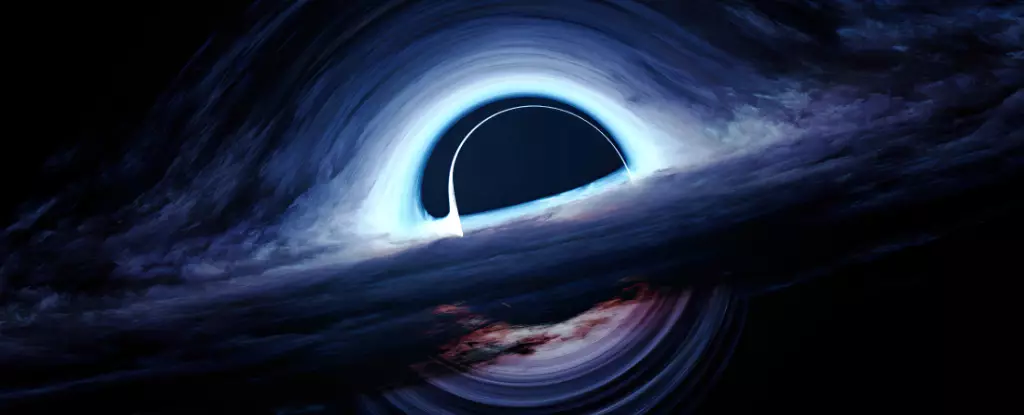Black holes have long captured the imaginations of scientists and enthusiasts alike, positioning themselves as the universe’s ultimate cosmic enigmas. Especially fascinating are supermassive black holes (SMBHs), which can possess mass equivalent to billions of suns. These celestial giants exist at the centers of galaxies, exerting profound gravitational pulls and influencing the dynamism of their cosmic neighborhoods. But how did these astonishing objects form, especially given the observation of incredibly luminous quasars—indicators of rapidly developing SMBHs—in the early universe?
Quasars: Illuminating the Early Universe
Research shows that quasars emerged when the universe was less than one billion years old, signifying that SMBHs have a long-standing presence in cosmic history. Quasars are extraordinary in their brightness and can be seen across great distances, offering a glimpse into the conditions of the nascent universe. They outshine their host galaxies, becoming some of the most luminous objects we can observe. However, the existence of these powerful sources poses substantial questions about black hole accretion and growth under the extreme conditions of the early universe.
Accretion, the process by which black holes siphon off nearby material, generates immense radiation, leading to a limitation on how swiftly they can grow. Hence, the challenge arises: how could massive quasars populate the cosmos so soon after the Big Bang? To address this, astronomers must consider the timeline and mechanisms of black hole formation, which might point to rapid stellar evolution or the tantalizing possibility of primordial black holes.
Mechanisms of Formation: Theoretical Perspectives
Several theories attempt to elucidate how SMBHs can appear in the universe so quickly. One popular hypothesis suggests that primordial black holes formed shortly after the Big Bang. While this might be plausible for smaller black holes, the standard cosmological model offers no substantial support for the formation of many massive black holes during this early period.
The more widely accepted theories include the latter stages of intense stellar evolution. Massive stars can yield stellar black holes at the end of their life cycles. Amidst exceptionally dense star clusters, these stellar black holes could merge and potentially grow at accelerated rates. In this context, the idea of “seed” black holes—either stellar mass seeds or “heavy seeds”—comes into play. The latter may arise via direct collapse mechanisms, where gas clouds succumb under their own gravity.
However, these complex formation scenarios raise fundamental issues about the prevalence of black holes in the early universe: if they are indeed abundant, as suggested by recent observations, how did conventional models account for their emergence?
Traditionally, astronomers have grappled with quantifying black holes in the early universe due to observational limitations—only particularly luminous quasars could be examined effectively. Nevertheless, a shift has occurred with innovative monitoring techniques in telescopes, including the powerful James Webb Space Telescope (JWST). By tracking luminosity variations in distant galaxies over extended periods, researchers have been able to create a detailed census of early black holes.
Unexpectedly, studies reveal that there are far more black holes in ordinary early galaxies than previously perceived. If these findings hold true, they imply a greater complexity to black hole formation mechanisms—potentially necessitating a reevaluation of existing cosmological models.
Recent astronomical endeavors have further uncovered more unusual avenues to black hole creation. One intriguing possibility includes the formation of “dark stars”—hypothetical entities that capture dark matter during stellar formation, disrupting typical nuclear ignition processes. These stars could grow significantly more massive, leading to the eventual collapse into supermassive black holes.
The relentless pursuit to understand black holes—and especially the burgeoning class of supermassive ones—stands at a critical juncture. Exciting future missions, such as the upcoming Euclid mission and Nancy Grace Roman Space Telescope, aim to fill in the gaps of black hole populations, particularly those that are fainter and more elusive. The ongoing efforts from facilities like the Square Kilometer Array promise further insights into the nature of early universe black holes.
However, the JWST uniquely stands out, with its refined sensitivity and spectroscopic tools to detect faint black hole activity. Researchers aim to gain ground-breaking insights over the next few years, potentially witnessing the formation of black holes as the universe transitions from a primordial state to its present configuration.
The quest to decode the origins and evolution of supermassive black holes not only pushes the boundaries of contemporary astrophysics but continues to inspire a broader inquiry into the foundational elements of our universe. The secrets lying in these enigmatic objects may reshape our understanding of cosmic evolution and the dynamics of galaxies.

